Refine search
Actions for selected content:
36856 results in Cambridge Textbooks
Appendix B - Standard Atmosphere
-
- Book:
- Fundamentals of Jet Propulsion with Power Generation Applications
- Published online:
- 01 September 2023
- Print publication:
- 10 August 2023, pp 606-606
-
- Chapter
- Export citation
Appendix J - Axial Compressor Radial Equilibrium Details
-
- Book:
- Fundamentals of Jet Propulsion with Power Generation Applications
- Published online:
- 01 September 2023
- Print publication:
- 10 August 2023, pp 672-674
-
- Chapter
- Export citation
Part I - Thinking in General
-
- Book:
- Thinking and Deciding
- Published online:
- 22 September 2023
- Print publication:
- 10 August 2023, pp 1-104
-
- Chapter
- Export citation
Part I - Cycle Analysis
-
- Book:
- Fundamentals of Jet Propulsion with Power Generation Applications
- Published online:
- 01 September 2023
- Print publication:
- 10 August 2023, pp 1-250
-
- Chapter
- Export citation
4 - Logic
- from Part I - Thinking in General
-
- Book:
- Thinking and Deciding
- Published online:
- 22 September 2023
- Print publication:
- 10 August 2023, pp 81-104
-
- Chapter
- Export citation
2 - The study of thinking
- from Part I - Thinking in General
-
- Book:
- Thinking and Deciding
- Published online:
- 22 September 2023
- Print publication:
- 10 August 2023, pp 33-66
-
- Chapter
- Export citation
11 - Ducts, Mixers, Exhausts, and Stacks
- from Part III - Nonrotating Components
-
- Book:
- Fundamentals of Jet Propulsion with Power Generation Applications
- Published online:
- 01 September 2023
- Print publication:
- 10 August 2023, pp 527-546
-
- Chapter
- Export citation
Preface to the fifth edition
-
- Book:
- Thinking and Deciding
- Published online:
- 22 September 2023
- Print publication:
- 10 August 2023, pp xv-xviii
-
- Chapter
- Export citation
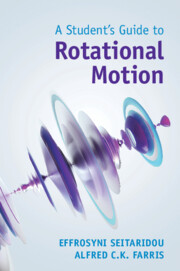
A Student's Guide to Rotational Motion
-
- Published online:
- 07 August 2023
- Print publication:
- 03 August 2023
-
- Textbook
- Export citation
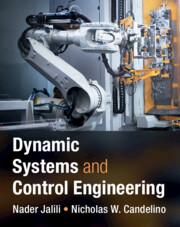
Dynamic Systems and Control Engineering
-
- Published online:
- 04 August 2023
- Print publication:
- 15 June 2023
-
- Textbook
- Export citation
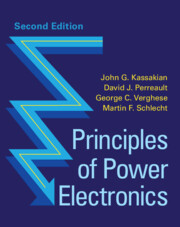
Principles of Power Electronics
-
- Published online:
- 03 August 2023
- Print publication:
- 03 August 2023
-
- Textbook
- Export citation
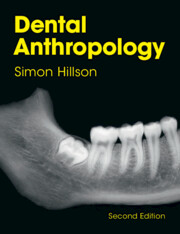
Dental Anthropology
-
- Published online:
- 03 August 2023
- Print publication:
- 17 August 2023
-
- Textbook
- Export citation
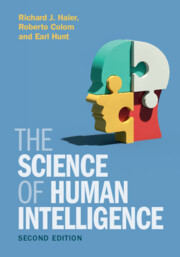
The Science of Human Intelligence
-
- Published online:
- 03 August 2023
- Print publication:
- 03 August 2023
-
- Textbook
- Export citation
Preface
-
- Book:
- A Student's Guide to Rotational Motion
- Published online:
- 07 August 2023
- Print publication:
- 03 August 2023, pp ix-x
-
- Chapter
- Export citation
3 - Rotational Dynamics
-
- Book:
- A Student's Guide to Rotational Motion
- Published online:
- 07 August 2023
- Print publication:
- 03 August 2023, pp 54-71
-
- Chapter
- Export citation
12 - Dynamic Force Analysis
- from Part III - Dynamics of Machines
-
- Book:
- Theory of Machines and Mechanisms
- Published online:
- 24 August 2023
- Print publication:
- 03 August 2023, pp 702-793
-
- Chapter
- Export citation
12 - Dynamic Models and Control: AnOverview
- from Part II - Dynamic Models and Control
-
- Book:
- Principles of Power Electronics
- Published online:
- 03 August 2023
- Print publication:
- 03 August 2023, pp 313-345
-
- Chapter
- Export citation
13 - Vibration Analysis
- from Part III - Dynamics of Machines
-
- Book:
- Theory of Machines and Mechanisms
- Published online:
- 24 August 2023
- Print publication:
- 03 August 2023, pp 794-856
-
- Chapter
- Export citation
5 - Angular Momentum
-
- Book:
- A Student's Guide to Rotational Motion
- Published online:
- 07 August 2023
- Print publication:
- 03 August 2023, pp 90-109
-
- Chapter
- Export citation
Preface
-
- Book:
- The Science of Human Intelligence
- Published online:
- 03 August 2023
- Print publication:
- 03 August 2023, pp xiii-xvi
-
- Chapter
- Export citation
